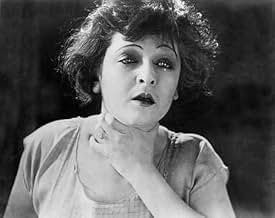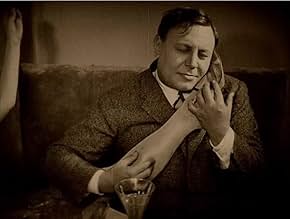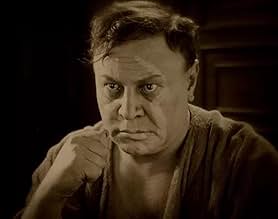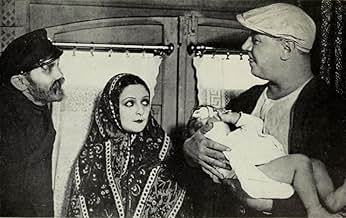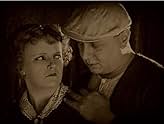Ajouter une intrigue dans votre languePrologue: The murderer "Boss" Huller - after having spent ten years in prison - breaks his silence to tell the warden his story. "Boss", a former trapeze artist, and his wife own a cheap sid... Tout lirePrologue: The murderer "Boss" Huller - after having spent ten years in prison - breaks his silence to tell the warden his story. "Boss", a former trapeze artist, and his wife own a cheap side-show that displays ''erotic sensations''. But he longs for his former glamorous life in ... Tout lirePrologue: The murderer "Boss" Huller - after having spent ten years in prison - breaks his silence to tell the warden his story. "Boss", a former trapeze artist, and his wife own a cheap side-show that displays ''erotic sensations''. But he longs for his former glamorous life in the circus. When he meets the orphan Berta-Marie, he falls under her spell and leaves his ... Tout lire
- Réalisation
- Scénario
- Casting principal
- Récompenses
- 3 victoires au total
- Acrobatic Ensemble
- (as Die Drei Codonas)
Avis à la une
The print I saw at New York's Museum of Modern Art did not have the 'prolog' either. Perhaps it was omitted when the film was released in the US.
None of this is absolutely necessary to enjoy the film, however, which has beautifully detailed performances and terrific camerawork by Karl Freund. The trapeze sequences will leave you giddy. The montages of variety acts are witty and vibrant. Berlin nightlife in the '20s looks glamorous. And Jannings surely has one of the classic silent-screen actors' faces, eloquently conveying a wide spectrum of emotions.
"Variete" was a sensation when it appeared, primarily for its camerawork. At the time, director EA Dupont took most of the kudos and seemed launched on a promising career. But he was tapped out after his next flick, the estimable "Picadilly," and in retrospect, Freund is the creative force whose part in "Variete" assumes a place in a major body of film work. That being said, Dupont's work with the actors here is outstanding and a key part of the film's success.
The love story involves Herr "Boss" Huller ( Herr Emil Jannings ) and the seductive orphan Frau Berta-Marie ( Fay Lya de Putti ) Once a famous trapeze artist, "Boss" has been reduced to managing a sordid fairground attraction together with his wife ( Frau Maly Delschaft ). He falls madly in love with Berta-Marie and seeks to start a new life with his lover, leaving his wife and child behind.
The virtuosity in the dramatic use of the camera-work together with film narrative by Herr Dupont is simply great. Through the eyes of "Boss'", Dupont skilfully compares the young and vital Berta-Marie and the faded and worn wife. Later the camera shoots from behind Huller's back to depict a desperate man utterly defeated and broken. The expressive close-ups wherein hidden feelings are made transparent are also superb as is the portrait of the people of Berlin, inhabitants of a decadent but thrilling city. The frenzied nightlife of Weimar Berlin (Wintergarten, Vaudeville Theater, fairgrounds) is vividly captured by the camera-work of Herr Karl Freund und Herr Carl Hoffmann.
The camera-work is especially impressive during the trapeze sequences wherein Herr Dupont, with the aid of optical special effects by Herr Ernst Kunstmann, employs many different camera angles to emphasize the riskiness of the trapeze act and the riskiness of the relationship between "Boss", Berta-Marie and their partner, the famous artist Herr Artinelli ( Herr Warwick Ward ) . The tension builds during the performance because we know that Herr "Boss" has discovered that Berte-Marie and Artinelli have become lovers.
The actors are splendid, specially Herr Jannings who, when properly directed , can express powerfully the most inner and divergent human feelings, Frau Lya de Putti, is no femme fatale type at all but that certainly is the point; she's attractive enough but common, someone easily charmed by a stylish man like Herr Artinelli.
"Varieté" is an exemplary work wherein all the achievements and virtuosity of German cinema of that time are on display. You have Expressionism intertwined with social comment, a fascinating portrait of the times. Dupont's wavers a bit at the end and allows a minor concession which is forgivable and by no means fatal to the film as a whole.
And now, if you'll allow me, I must temporarily take my leave because this German Count must refuse a splendid offer to be a fairground attraction.
Le saviez-vous
- AnecdotesAmerican humorist S. J. Perelman was so taken with this movie he wrote about it 40 years later in an essay entitled "And, in the Center Ring, That Stupendous Death-Defying Daredevil..." He said "Alfredo Cordona, the wizard of the flying rings, and his partners doubled for the actors. I saw the picture four times, reacting so volcanically to Cordona's forward triple somersault that I almost rent the chair in front of me to matchwood."
- ConnexionsEdited into Prisoner of Paradise (2002)
Meilleurs choix
Détails
Box-office
- Montant brut aux États-Unis et au Canada
- 709 613 $US
- Durée
- 1h 44min(104 min)
- Mixage
- Rapport de forme
- 1.33 : 1



